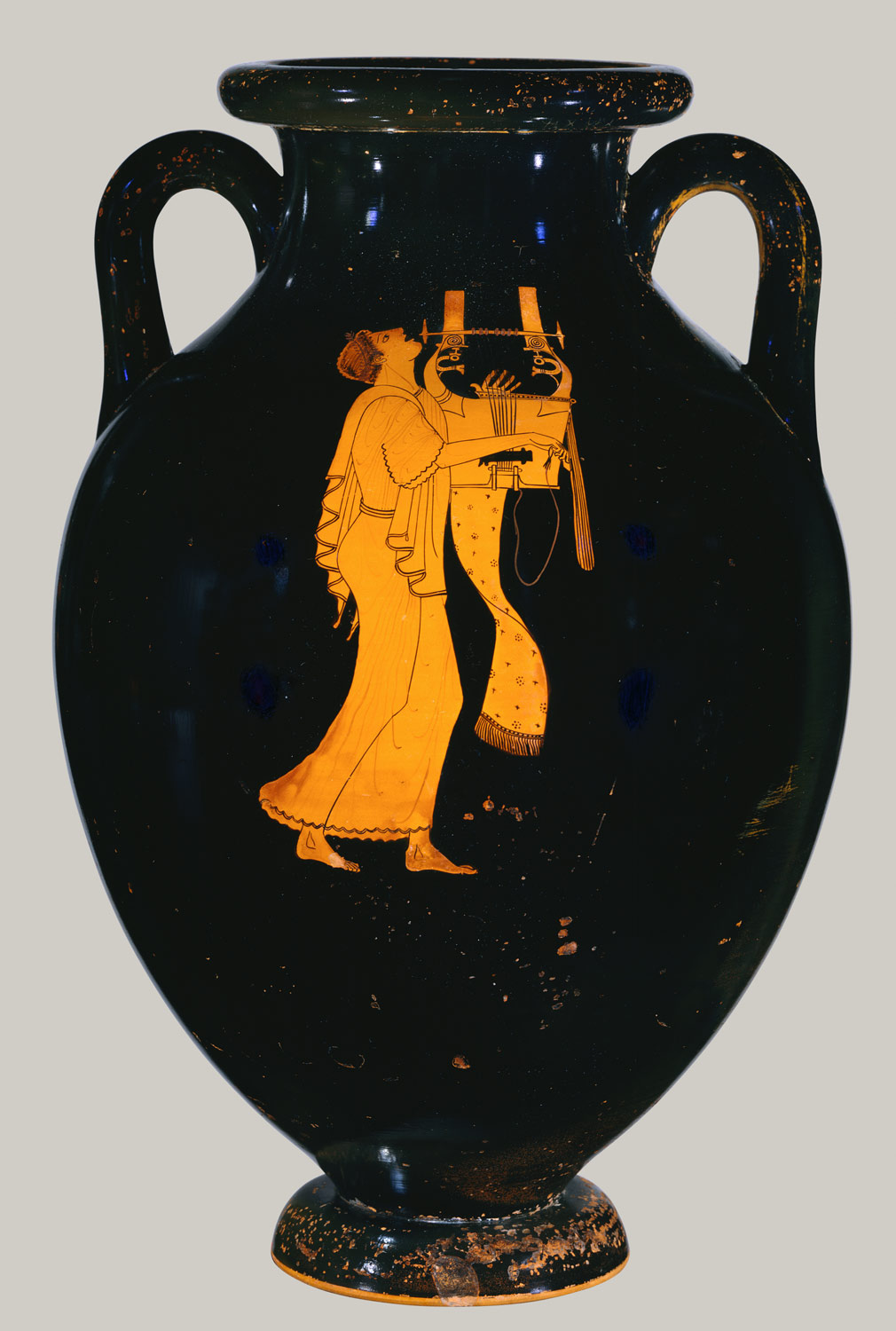

This amphora is believed to have been created by the Berlin Painter, who is considered to be one of the most talented vase-painters of his time. He helped develop the Classic style of red-figure pottery, and he likely trained many younger painters as well. This tall vessel was probably used to hold or transport water, food, or wine.
One of the Berlin Painter's signatures was the abandonment of patterns and panels, and the figures on the amphora are in perfect harmony with the curvature of the vessel itself. The figure on the left is a musician playing a kithara, an instrument used for formal performances in festivals and contests that consists of seven strings and a wooden body. He is wearing a long, flowing garment, the lines of which create both tranquility and movement to the rhythm of the imagined music. The strain in his neck and his open mouth show the passion with which the kitharode is singing. The figure on the other side of the vase listens (or judges) the kitharode and extends his arm to the singer. Instead of using patterns and panels with intricate decoration, the Berlin Painter created a simple scene of two figures against a plain black background. Still, he managed to create a sense of emotion and passion with the two figures.
This amphora is an example of red-figure pottery. The red figures on a black background were created by applying a glaze to the negative space around the figures. When the vessel was placed in a kiln, the glazed areas turned black, which created a strong contrast between the foreground and background. This particular amphora stands out because of its striking simplicity compared to the others featured on the Met website.




